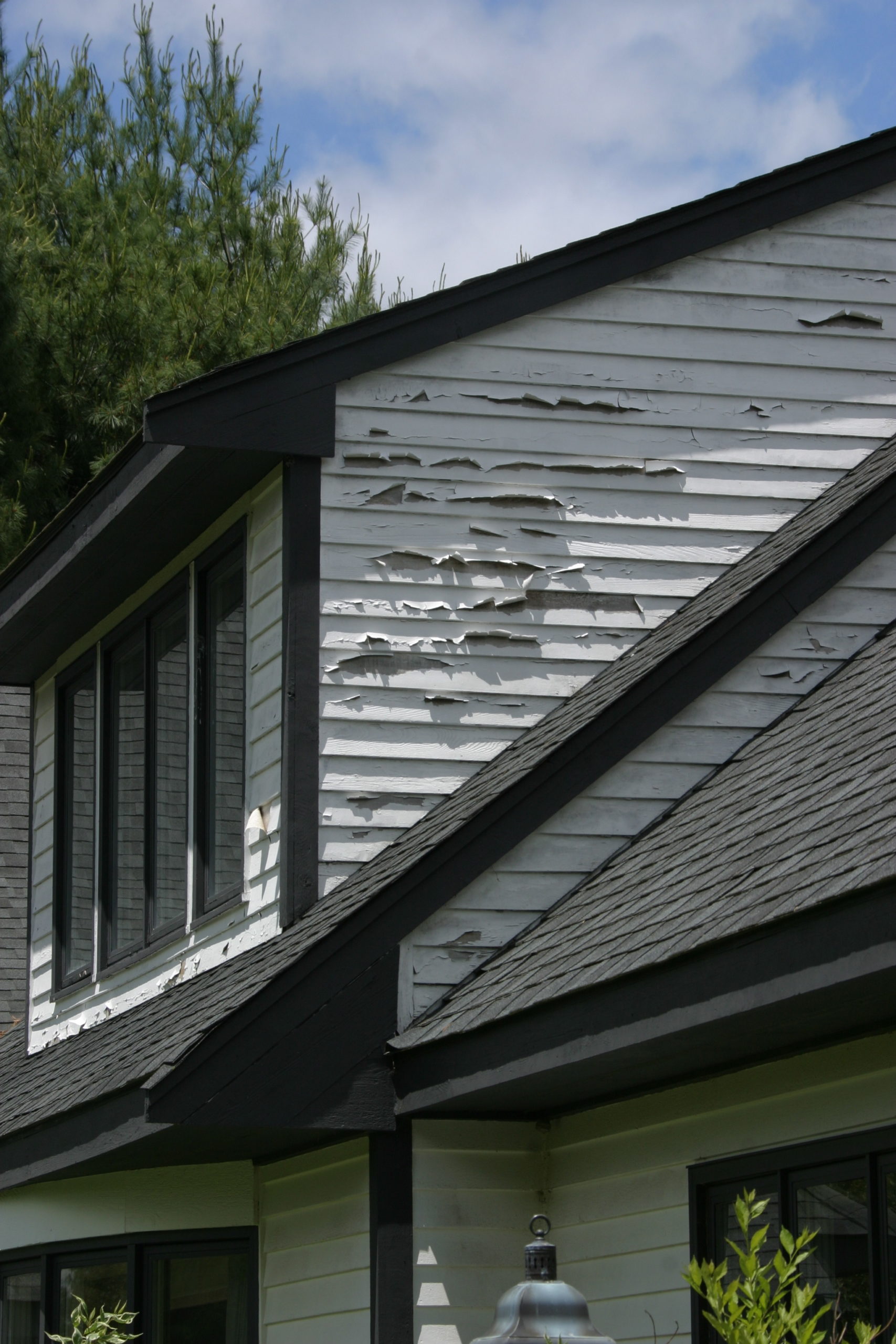Painting is an easy way to dramatically change the look and feel of your home, inside and out. However, house painting is not as simple as opening a can of paint and applying to the walls. It is a labor-intensive process that requires careful preparation. Otherwise, you could have disastrous results that may make your home look worse than before.
 Blistering
Blistering
Painting on a hot or damp surface can cause blisters or bubbles to form. When painting on a wet surface, the tiny droplets dry in place, creating an unsightly bubbling effect. Blistering can occur when applying the paint on an exceedingly hot surface. One way to avoid blistering and bubbling is to paint on a cool, dry, and clean surface. Also, avoid painting in direct sunlight or early in the morning when there is condensation.
Chalking
Another common problem is the appearance of a white or chalky substance that appears on the surface, like the exterior of a home. Some small amounts of chalking, especially in dry arid climates, is normal and is easily wiped away. If your house is white you may not even notice it at all. However, excessive chalking often occurs when using low-quality paint. Low-quality paints contain pigment extenders that wear away in the sun leaving a chalky film coating. Another cause is over-thinning. Thinning the paint too much loses the resins that bind the pigments releasing a chalky film during sun exposure. Using high-quality exterior paints for exterior surfaces and avoiding over-thinning can help prevent chalking.
Wrinkling
Painting on an inadequately prepared surface, using uncured paint that was exposed to high humidity levels, or applying another coat when the surface is still wet, can cause wrinkles. To avoid the appearance of folds or creases in the coating, evenly apply your paint at the same spread rate. Then allow the first coat of paint to dry completely before applying another coat. Always start with a clean surface and store paint cans at the proper environmental conditions to prevent contamination.
 Peeling
Peeling
You recently finished painting an entire wall in your living room, and now it’s starting to peel. Why is it peeling? Peeling often occurs when you paint on an unclean surface. Also, there may be moisture seeping into the wall, causing it to crack or peel. There are several things you can do to prevent peeling from ruining your paint job. Before painting, clean the surface thoroughly to remove any dirt or dust particles. Only paint on a clean, dry surface away from direct sunlight. Use the right primer and paint for the surface or substrate. Applying the right primer is essential as it seals the surface so the paint will properly adhere to it.
Alligator Effect
It occurs when the painted surface develops a cracking pattern that resembles the skin of an alligator. Applying a second coat before the first one is dry, incompatibility between the first and second coat, and using low-grade paint, can cause an alligator skin effect. You can help prevent this by allowing the first coat to dry completely before applying the second, removing the old paint to eliminate adhesion issues, and using high-grade paint.
Professional Home Painting
These are some of the painting problems you may encounter when doing it yourself. For best results, hire a professional home painter. Professional painters have the knowledge and skills to prevent these and other problems to produce desirable, long-lasting results.

